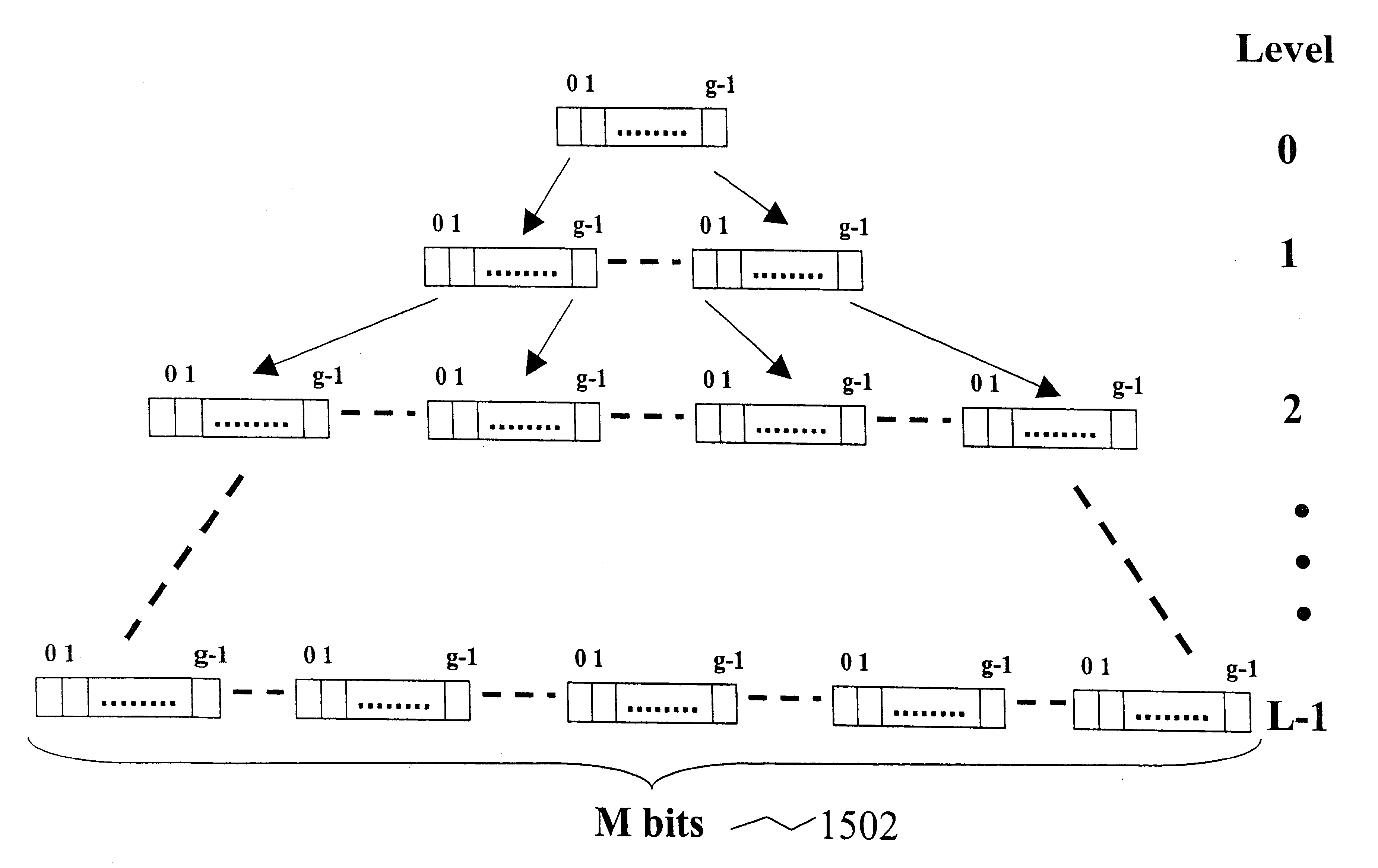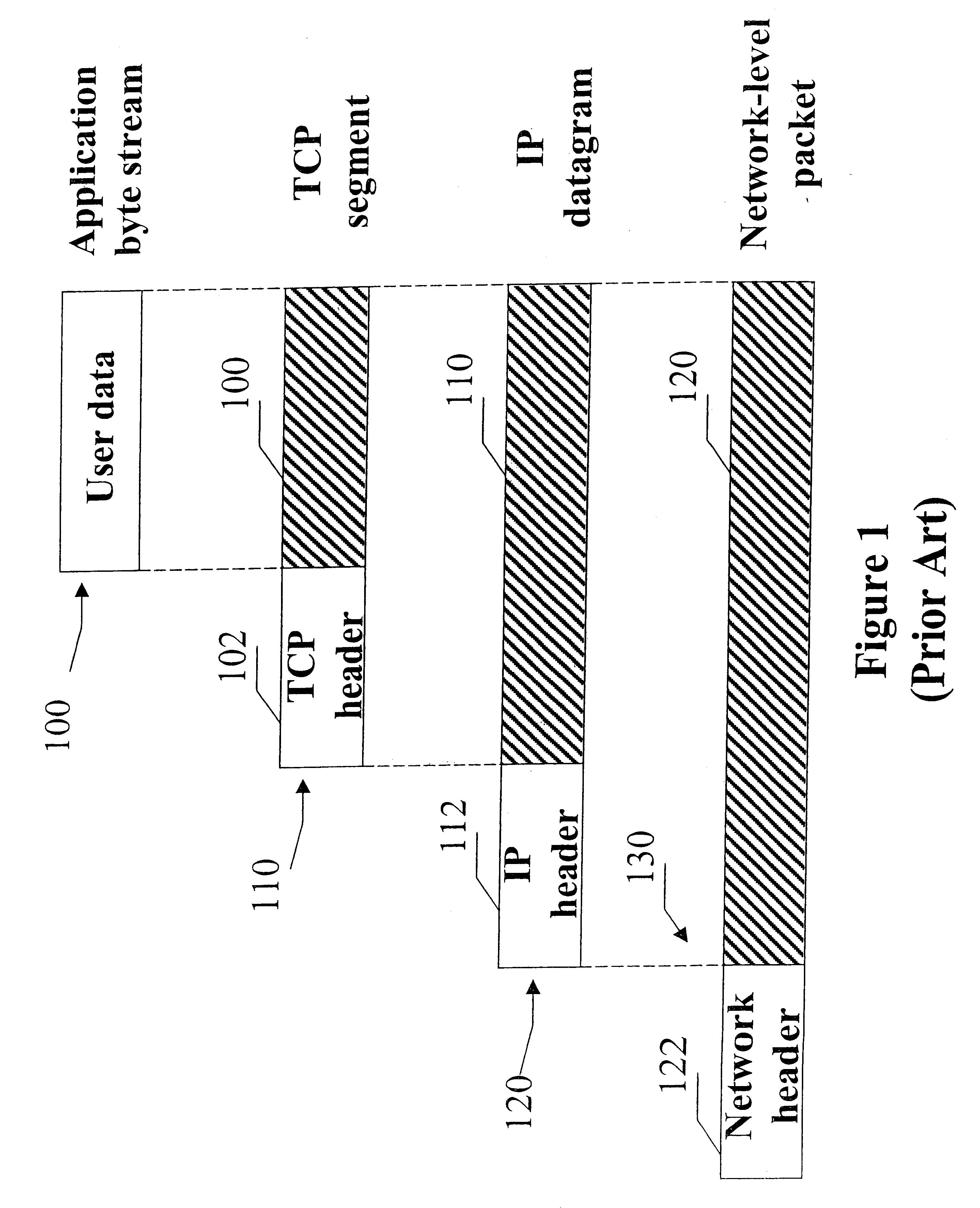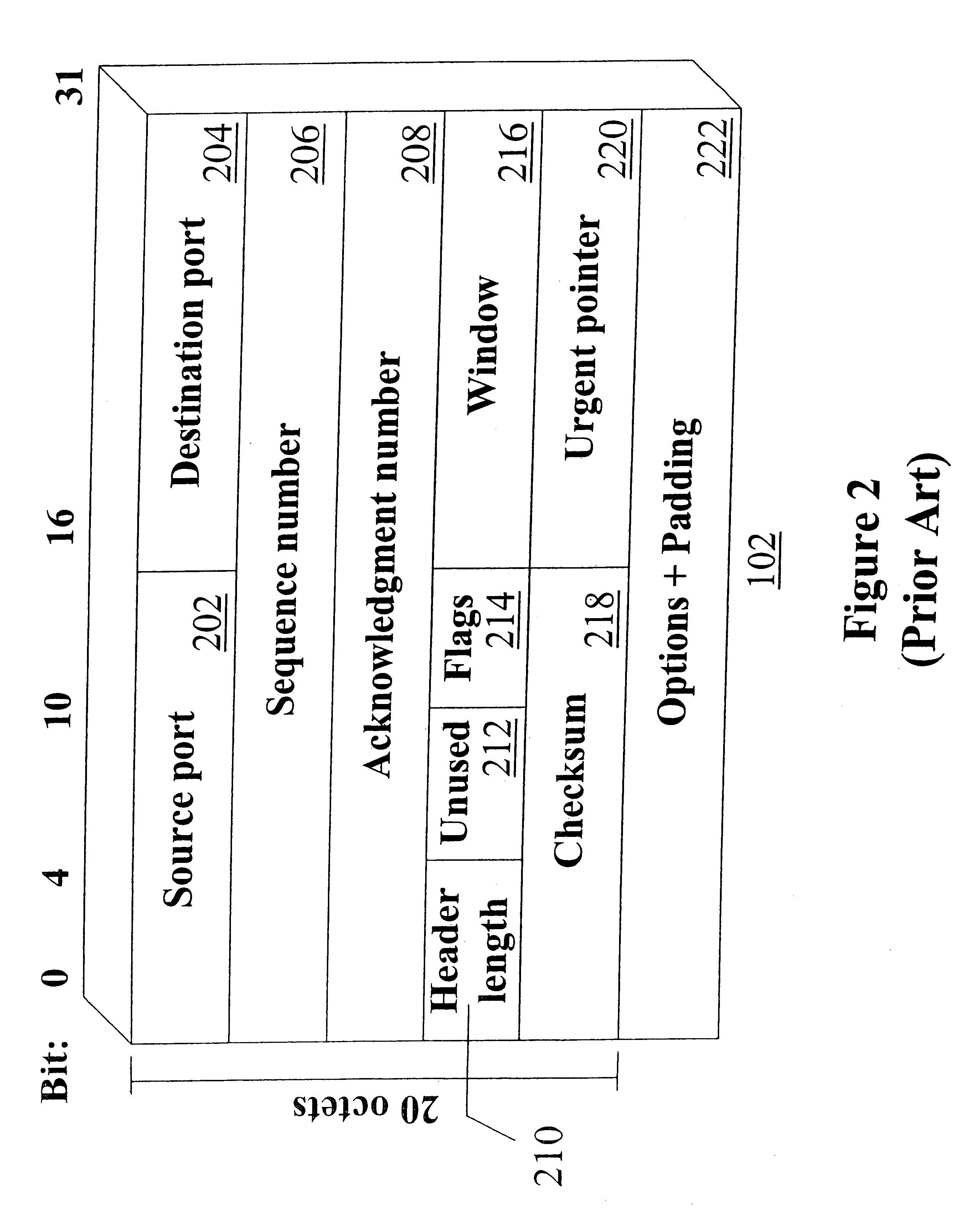For example, people would not tolerate much
delay in their voice communications during a
telephone call.
However, video communications may be able to tolerate some
data corruption or loss to the extent that such losses are imperceptible or not annoying to people.
The communications of important data, on the other hand, may tolerate
delay, but might not tolerate
data loss or corruption.
Thus, when circuit switched connection is used to carry bursty traffic, available
communication bandwidth occurring between successive bursts is simply wasted.
Such synchronization becomes extremely difficult for wide bandwidth services.
Moreover, multi-rate
circuit switching includes the inherent inefficiencies of a circuit switch, discussed above, when bursty data is involved.
Unfortunately, the switch for multi-rate circuit switching is complex.
Furthermore, the channel bandwidths are inflexible to meet new transmission rates.
Moreover, much of the bandwidth might be idle when it is needed.
Lastly, multiple basic rate circuit switching includes the inherent inefficiencies of a circuit switch, discussed above, when bursty data is involved.
However, today data links are very reliable such that the probability of errors being introduced by data links are no longer of any concern.
Since data links are very reliable and the probability of errors being introduced by data links are no longer of any great concern, ATM
fast packet switching does not correct errors or
control flow within the network (i.e., on a link-by-link basis).
Unfortunately, with input queuing, an ATM
cell in the front of the
queue waiting for an occupied output channel to become available may block other ATM cells behind it which do not need to wait.
This requirement on the memory speed of the output buffer becomes a problem as the size of the switch (i.e., as N) increases.
Accordingly, for a 1024 by 1024 switch (i.e., a switch having 1024 inputs and 1024 outputs), pure output buffering is not feasible because the speed of the output port buffers would have to be fast enough to
handle 1024 ATM cells.
Moreover, the read and write discipline of the central
queue cannot be a simple FIFO because ATM cells destined for different outlets are all merged into a single queue.
Of course, the
memory management system becomes more complex and cumbersome when the number of output ports (i.e., the size of the switch) increases.
For example, people would not tolerate much
delay in their voice communications during a
telephone call.
However, video communications may be able to tolerate some
data corruption or loss to the extent that such losses are imperceptible or not annoying to people.
The communications of important data, on the other hand, may tolerate delay, but might not tolerate
data loss or corruption.
Thus, the source can slow its transmission of congestion controlled traffic in response to
network congestion.
However, some
packet loss (dropped packets) is acceptable.
For example,
high definition video has a fair amount of redundancy and the loss of a few packets would likely be imperceptible, while with
low fidelity audio, the loss of a few packets would be readily perceived as annoying clicks and buzzes.
These mechanisms are quickly becoming unsatisfactory.
ATM networks also have the challenge of providing various qualities of service to various types of traffic.
The aspects of ATM that provided the benefits discussed in .sctn.1.2.1.2.1 above, present challenges when it comes to controlling traffic.
Further, their high speed switching and transmission make ATM networks more volatile in terms of congestion and traffic control.
That is, transmission and switching are so fast that, during the time between the detection of a problem (e.g., a dropped
cell) and its indication at the transmission source, a lot of unnecessary data will have already been transmitted.
In other words, feedback is slow relative to propagation delays of the network.
However, FIFO queues have some disadvantages (such as those introduced in .sctn.1.2.1.2.2 above).
First, packets from higher priority flows or flows which are more
delay sensitive receive no special treatment.
Second, a "greedy" transmission source (i.e., one that does not back off when
network congestion exists), can crowd out other connections.
However, in the context of TCP / IP (or any other protocol that does not fix the size of packets), shorter packets are penalized.
Naturally, since packets may have various sizes in the TCP / IP protocol, this ideal case cannot be performed.
Recall the
fair queuing and bit round robin
fair queuing methods do not provide different amounts of capacity to different flow types.
However, it is generalized to bits, and does not consider packets which may have differing lengths.
However, as the number N of queue flows increases (and higher data rates are used), these known methods become unsatisfactory.
Unfortunately, as alluded to above, such a
search engine would be expensive to implement.
However, each of these chips can only
handle 256 sessions (or flows).
In such applications, the number of required sequencer chips would simply be too large to be cost effective.
Unfortunately, this method can become too slow when the number of distinct time stamp values is large.
However, a sizable on-
chip memory requirement makes the PCAM too expensive to implement.
 Login to View More
Login to View More  Login to View More
Login to View More 


